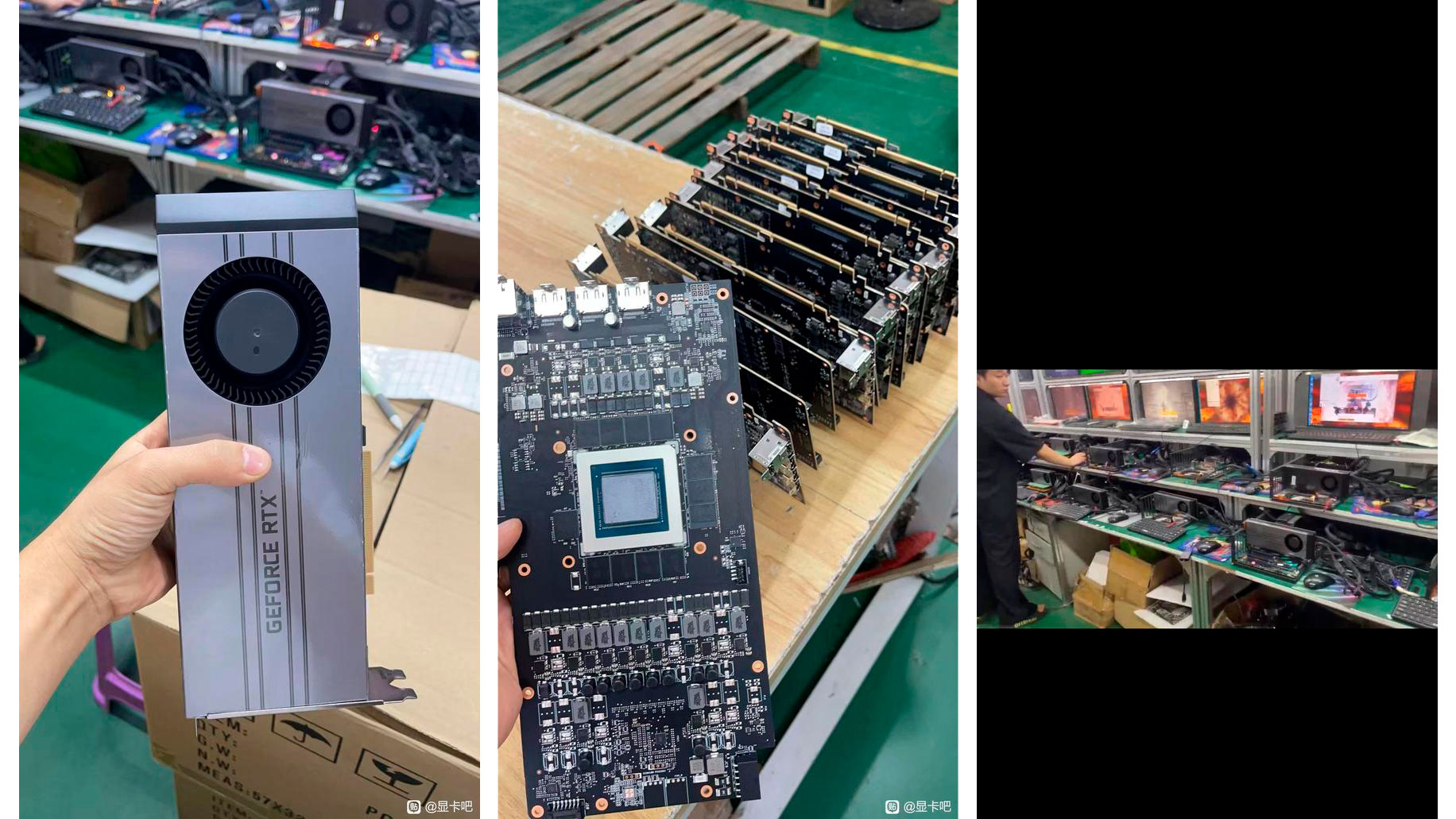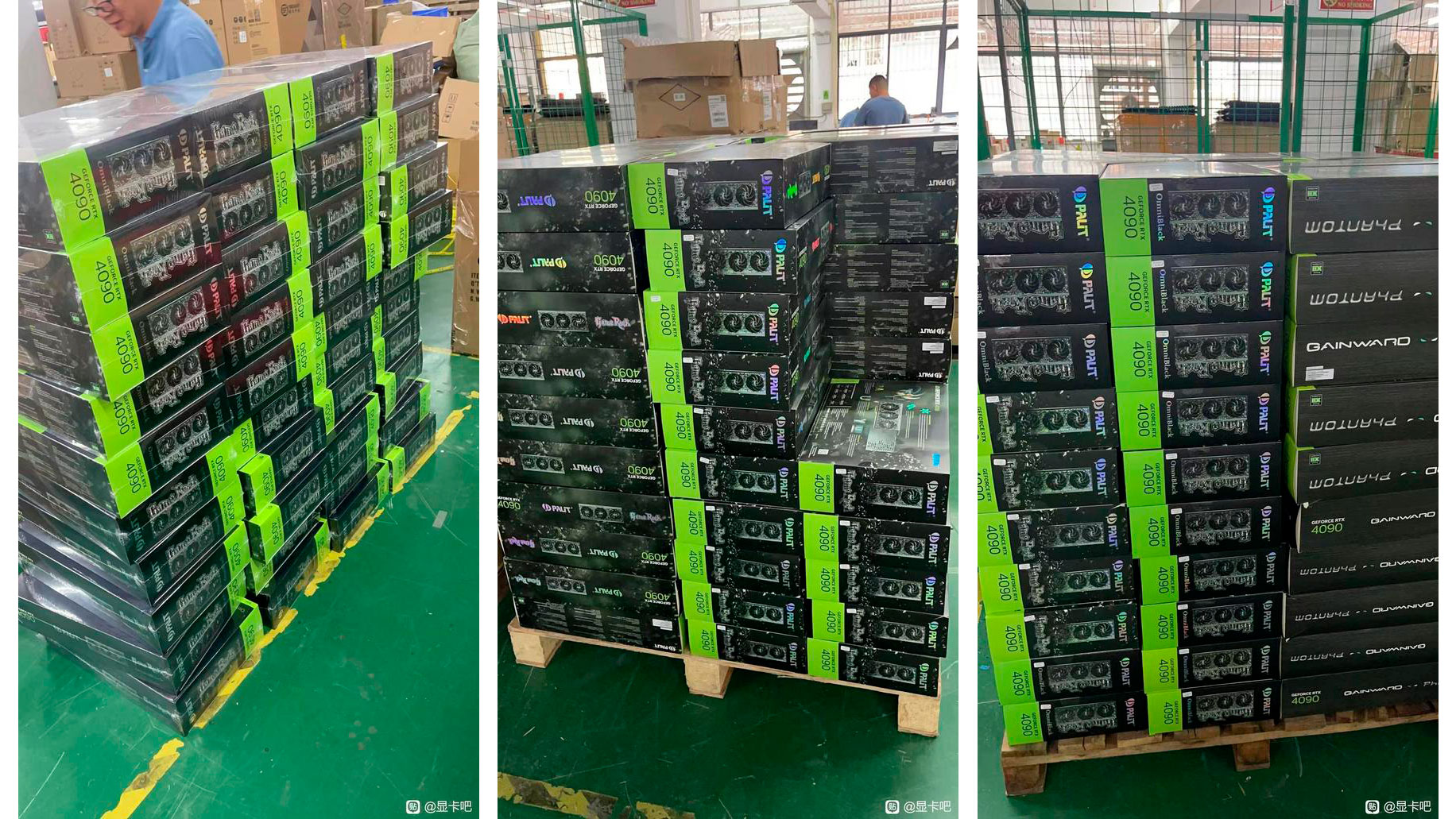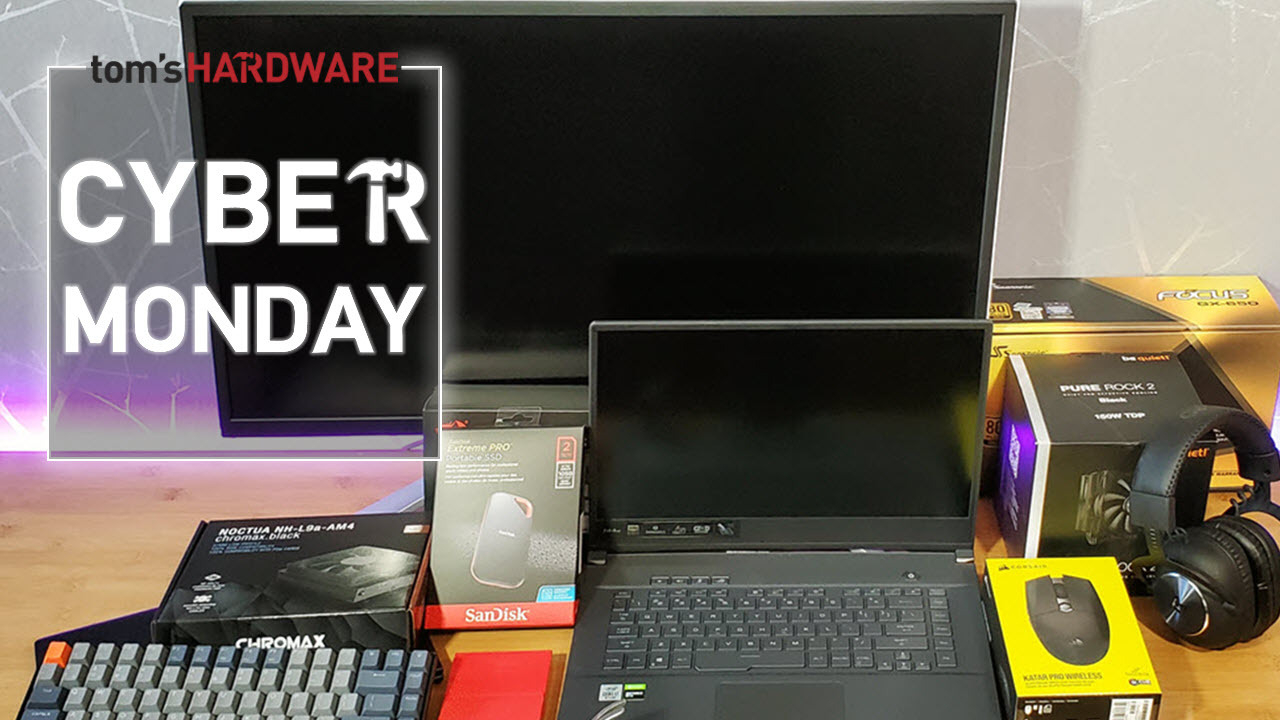
The GeForce RTX 4090 is undeniably one of the best graphics cards for gaming. However, the flagship Ada Lovelace GPU has also become one of the most coveted graphics cards for AI workloads in China now that the U.S. has banned Nvidia from shipping its AI products to the country, with the GeForce RTX 4090 included.
One user from the Tieba Baidu forums recently visited a fascinating Chinese factory dedicated to the graphics card recycling business. The workers diligently disassembled the custom GeForce RTX 4090 graphics cards, extracted the AD102 silicon and GDDR6X memory modules, and repurposed them onto a "special reference" PCB with a blower-style cooler.
It's similar to organ trafficking because the factories only persevere the previous GPU and GDDR6X chips. Meanwhile, they dump the bare PCBs and coolers on the Chinese second-hand markets. Sometimes, these discarded hardware sell for less than $50.
These factories aim to reduce the custom GeForce RTX 4090's footprint with a more compact blower style to turn them into "AI accelerators." You can use the GeForce RTX 4090 as it is for AI workloads. However, custom models have gotten so huge that they have to occupy up to four PCI slots, and the old-school blower-style cooler is the way to go.
The typical blower only takes up two PCI slots, allowing you to stick four or more GeForce RTX 4090 graphics cards into a rack or clusters in the case of the more prominent players, like the big AI farms. A few GeForce RTX 4090 blower graphics cards are on the market, including Manli, MSI, and AFOX products. If it was difficult to secure one before the ban, getting your hands on one is almost impossible now if you live in China. That's where these Chinese factories come in.

One set of leaked photographs show a few pallets with a boatload of GeForce RTX 4090 graphics cards from vendors like Gainward and Palit. Some models from Asus, Colorful, Zotac, and Gigabyte subsequently appeared in other photographs. The factory reportedly received these shipments before the U.S. GeForce RTX 4090 ban. This is just one of the many factories starting to sprout up in China.
Nvidia has removed all mentions of the GeForce RTX 4090 on its Chinese website, and some of its AIB partners, such as Galax, have followed suit. GeForce RTX 4090 pricing has skyrocketed in the Chinese market, selling for over $2,700. The other Ada Lovelace graphics cards went up in price as well. Even the last-generation GeForce RTX 3090 has risen to $986, a 40% price hike from what the Ampere-based graphics use to retail for. Meanwhile, AMD's RDNA 3 products, specifically the Radeon RX 7900 XTX, have benefitted from the GeForce RTX 4090's affliction.
Get Tom's Hardware's best news and in-depth reviews, straight to your inbox.
The GeForce RTX 4090 hasn't just gotten more expensive in China, either. The graphics card's pricing in the U.S. market has increased over the last 18 months. Before the Black Friday sale, the GeForce RTX 4090 had already hit the $2,000 mark, 25% over the MSRP. Even now, the cheapest GeForce RTX 4090 starts at $1,669.99, a 5% above MSRP. Prices also showed an upward trend in Europe, where the GeForce RTX 4090 had a 17% pricing overheard.
During the cryptocurrency boom, mining farms deprived gamers of their precious graphics cards. However, the AI craze differs as AI farms aren't gobbling up consumer graphics cards. The GeForce RTX 4090's soaring pricing should be a temporary phenomenon as Nvidia had reportedly rushed as many units as the chipmaker could to its Chinese customers before the sanctions took effect. If you're on the market for a GeForce RTX 4090 upgrade, waiting until the pricing has stabilized may be wise.

Zhiye Liu is a news editor and memory reviewer at Tom’s Hardware. Although he loves everything that’s hardware, he has a soft spot for CPUs, GPUs, and RAM.
-
bit_user ReplyOne user from the Tieba Baidu forums recently visited a fascinating Chinese factory dedicated to the graphics card recycling business.
This part makes it sound like they're harvesting parts from GPUs sourced from the used market.
The factory reportedly received these shipments before the U.S. GeForce RTX 4090 ban.
Okay, so they're not really sidestepping the ban, but just remanufacturing components received before it, into a form factor that's more suitable for AI. Presumably, once those units are all gone, they'll close up shop or turn to another line of business. Maybe doing the same thing to 7900 XTX cards, perhaps. -
kamehaiku Thats exactly what is going to happen. I saw an article that the 7900xtx is on the ban along with AMD Wgpus. Usually within 24-48 hours the retail stock goes out of stock and 3rd party skyrockets. I got the sapphire nitro+ 7900xtx for 989. (Still other versions mostly available as of evening nov 24th) I was going to wait but decided black friday deals on every component is less expensive and pulled the trigger on a pc build. The next day (today) the same card is now 1189 to 1300 on amazon. Nvidia for sure but to see this now with AMD is a bleek future. AlohaReply -
hobbified Replyfactories only persevere the previous GPU and GDDR6X chips.
Was this written on a phone and then not copy-edited? I'm guessing "persevere" should be "preserve", and "previous" should be "precious". -
greenreaper Reply
Makes Gollum sound like a covetous ex:hobbified said:Was this written on a phone and then not copy-edited? I'm guessing "persevere" should be "preserve", and "previous" should be "precious".
"My own, my love... my previous!* 😸
